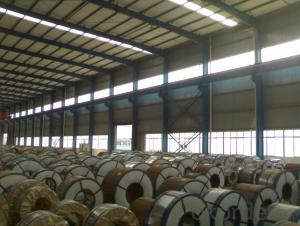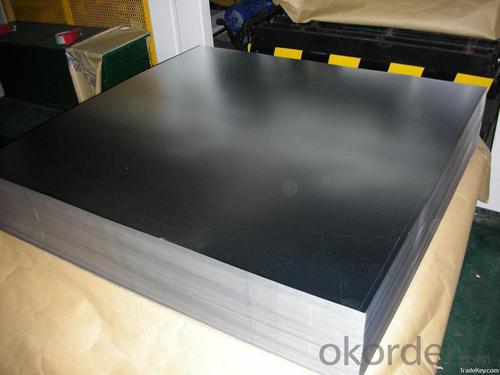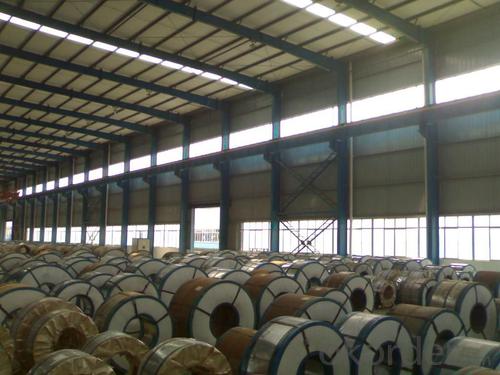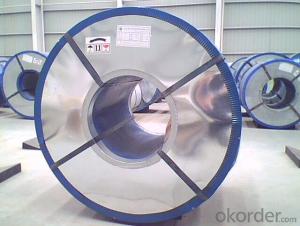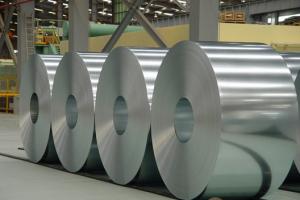Electrolytic Tinplate for Food and Chemical Packaging
- Loading Port:
- Tianjin
- Payment Terms:
- TT OR LC
- Min Order Qty:
- 25 m.t
- Supply Capability:
- 7000 m.t/month
OKorder Service Pledge
OKorder Financial Service
You Might Also Like
1.Structure of Electrolytic Tinplate for Food and Chemical Packaging Description
Electrolytic Tin Plate Coils and Sheets for Foods Metal Packaging, is one thin steel sheet with a coating of tin applied by electrolytic deposition. Tinplate made by this process is essentially a sandwich in which the central core is strip steel. This core is cleaned in a pickling solution and then fed through tanks containing electrolyte, where tin is deposited on both sides. As the strip passes between high-frequency electric induction coils, it is heated so that the tin coating melts and flows to form a lustrous coat.
2.Main Features of the Electrolytic Tinplate for Food and Chemical Packaging
Appearance – Electrolytic Tin Plate is characterized by its beautiful metallic luster. Products with various kinds of surface roughness are produced by selecting the surface finish of the substrate steel sheet.
Paintability and printability – Electrolytic Tin Plates have excellent paintability and printability. Printing is beautifully finished using various lacquers and inks.
Formability and strength – Electrolytic Tin Plates have got very good formability and strength. By selecting a proper temper grade, appropriate formability is obtained for different applications as well as the required strength after forming.
Corrosion resistance – Tinplate has got good corrosion resistance. By selecting a proper coating weight, appropriate corrosion resistance is obtained against container contents. Coated items should meet 24 hour 5 % salt spray requirement.
Solderability and weldability – Electrolytic Tin Plates can be joined both by soldering or welding. These properties of tinplate are used for making various types of cans.
Hygienic – Tin coating provides good and non toxic barrier properties to protect food products from impurities, bacteria, moisture, light and odours.
Safe – Tinplate being low weight and high strength makes food cans easy to ship and transport.
Eco friendly – Tinplate offers 100 % recyclability.
Tin is not good for low temperature applications since it changes structure and loses adhesion when exposed to temperatures below – 40 deg C.
3.Electrolytic Tinplate for Food and Chemical Packaging Images
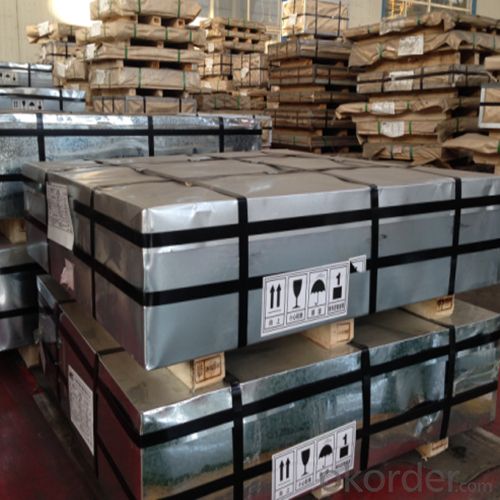
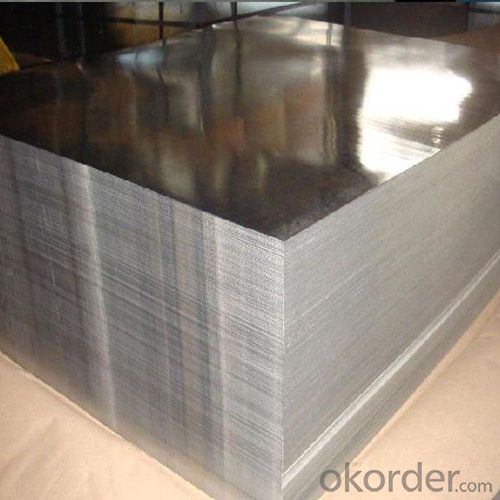
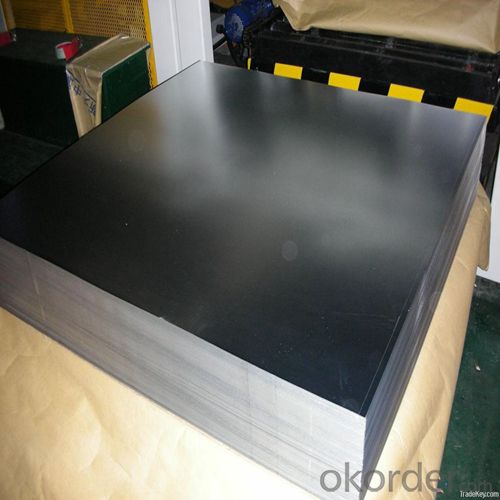
4.Electrolytic Tinplate for Food and Chemical Packaging Specification
Standard | ISO 11949 -1995, GB/T2520-2000,JIS G3303,ASTM A623, BS EN 10202
|
Material | MR,SPCC |
Thickness | 0.15mm - 0.50mm |
Width | 600mm -1150mm |
Temper | T1-T5 |
Annealing | BA & CA |
Coil Inner Diameter | 508mm |
Weight | 6-10 tons/coil 1~1.7 tons/sheets bundle |
Passivation | 311 |
Oil | DOS |
Surface | Finish,bright,stone,matte,silver |
5.FAQ of Electrolytic Tinplate for Food and Chemical Packaging
-What your tinplate material is used for ?
Tinplate is widely used for the packaging of products. Such as food cans,
beverage cans, pet cans, closures, general line cans and so on.
Printed Tinplate is offered!!
-How to place .an order or contact you ?
Please send us Email. we will give you a quick response in seconds .
- How is your quality ?
All our quality is prime even the secondary quality . We have many years experience
In this field with serious quality control standard . Advanced equipment, We welcome your visit to our factory .
- Q: How thick is tinplate?
- Tinplate typically has a thickness ranging from 0.13 to 0.49 millimeters.
- Q: How does tinplate perform in terms of lightness and portability?
- Tinplate performs exceptionally well in terms of lightness and portability. It is a lightweight material that allows for easy handling and transportation, making it highly suitable for various applications requiring mobility.
- Q: What are the challenges faced in the recycling of tinplate?
- One of the main challenges in the recycling of tinplate is the separation of tin from the steel base. Tinplate consists of a thin layer of tin coated on steel, and separating these materials requires specialized equipment and processes. Additionally, the presence of other contaminants, such as paint or coatings, can further complicate the recycling process. Proper sorting and cleaning of tinplate waste is necessary to ensure efficient recycling and minimize the loss of valuable materials.
- Q: What are the main applications of tinplate in the toy industry?
- Tinplate is commonly used in the toy industry for various applications. It is primarily utilized for creating tin toys or tinplate toys, which are highly durable, lightweight, and have a nostalgic appeal. Tinplate allows for intricate designs and vibrant colors, making it suitable for producing toy cars, trains, robots, and other figurines. Additionally, its corrosion resistance properties ensure longevity, making tinplate an ideal material for toys that withstand rough play and outdoor conditions.
- Q: What are the weight advantages of using tinplate?
- Tinplate offers several weight advantages compared to other packaging materials. Firstly, it is significantly lighter than materials like glass or aluminum, making it easier to handle and transport. This lightweight nature also contributes to lower shipping costs. Additionally, tinplate's lightness allows for more product to be packaged in a smaller space, maximizing efficiency and reducing storage requirements. Overall, the weight advantages of tinplate make it a preferred choice for many industries seeking cost-effective and efficient packaging solutions.
- Q: What are the common sizes of tinplate sheets?
- The common sizes of tinplate sheets vary, but they generally come in standard dimensions such as 24 x 36 inches, 36 x 48 inches, and 48 x 96 inches.
- Q: What are the advantages of using tinplate for gift packaging?
- One of the advantages of using tinplate for gift packaging is its durability. Tinplate is a strong and sturdy material that can withstand rough handling and protect the contents of the gift. Additionally, tinplate is resistant to corrosion and can keep the gift in good condition for a longer period of time. Another advantage is its aesthetic appeal. Tinplate can be easily decorated and customized, allowing for unique and eye-catching gift packaging designs. It also gives a premium and luxurious feel to the gift, enhancing its overall presentation. Lastly, tinplate is eco-friendly as it is recyclable, making it a sustainable choice for gift packaging.
- Q: Can tinplate be used for furniture?
- Yes, tinplate can be used for certain types of furniture, particularly for creating decorative elements or accents. However, it is not commonly used as the primary material for furniture due to its relatively low strength and durability compared to other metals like steel or aluminum.
- Q: What are the different ways to stack tinplate cans?
- There are several different ways to stack tinplate cans, depending on factors such as space availability and stability requirements. Some common methods include stacking them in a pyramid shape, where each subsequent layer is slightly smaller than the one below it. Another approach is to stack them in a column, where the cans are placed one on top of the other vertically. Additionally, cans can be stacked in a crisscross pattern, alternating the direction of each layer for added stability. Ultimately, the choice of stacking method depends on the specific needs and constraints of the situation.
- Q: How is tinplate used in the manufacturing of household appliances?
- Tinplate is commonly used in the manufacturing of household appliances as it provides a protective and decorative coating. It is used to create the outer shell or casing of appliances such as refrigerators, washing machines, and ovens. The tin coating helps to prevent corrosion and rusting, ensuring the longevity of the appliance. Additionally, the shiny and smooth surface of tinplate enhances the aesthetic appeal of the appliances, making them more visually appealing to consumers.
Send your message to us
Electrolytic Tinplate for Food and Chemical Packaging
- Loading Port:
- Tianjin
- Payment Terms:
- TT OR LC
- Min Order Qty:
- 25 m.t
- Supply Capability:
- 7000 m.t/month
OKorder Service Pledge
OKorder Financial Service
Similar products
Hot products
Hot Searches
Related keywords



